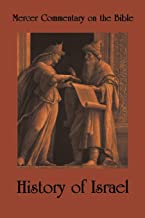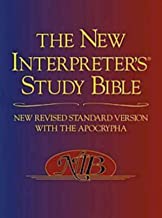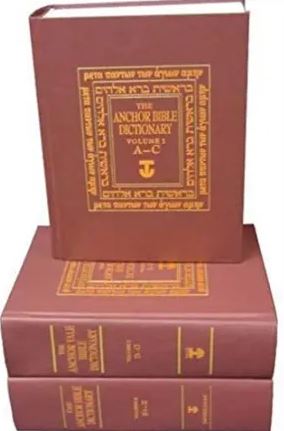Today’s post was written by Vanu Kantayya, one of my students at Northern Baptist Seminary. Vanu wrote a research paper for the course “Old Testament Theology: The God of the Old Testament,” in which she seeks to demonstrate that the God of the Old Testament is the same God of the New Testament. Her paper is titled: “The God of the Old Testament and the God of the New Testament.” The post today deals with divine warfare.
Read Part 1: The God of the Old Testament and the God of the New Testament – Part 1
Read Part 2: The God of the Old Testament and the God of the New Testament – Part 2
Claude Mariottini
Professor of Old Testament
Northern Baptist Seminary
Divine Warfare
In the biblical concept of holy war, it was important for Israel to remember that it was Yahweh who fought the battle for his people. Those fighting Yahweh’s war had to have faith and trust in him and not succumb to fear. Over and over, Yahweh repeats the formulaic battle cry, “Do not be afraid or dismayed.” Variations of this battle cry is found all over the Old Testament.
Yahweh says to Joshua, “Do not fear them, for I have handed them over to you” (Josh. 10:8). From Joshua we hear, “Do not be afraid or dismayed; be strong and courageous; for thus the LORD will do to all the enemies against whom you fight” (Josh. 10:25). The attitude of faith and confidence rose from a recognition of God’s sovereignty. This holy war cry was not limited to the Old Testament but is also heard from Jesus in the New Testament (John 16:33).
The number of warriors and sophisticated weaponry was deemed unimportant in holy warfare. Israel was not allowed to use horses and chariots like the other nations. They were not to trust in their own prowess but put their faith in Yahweh who delivered them from their enemies by his own hand. In the story of Gideon, only 300 out of the 32,000 were permitted to fight (Judg. 7:2).[1]
David and Goliath were another mismatched pair but David won the victory because of God’s presence on his side (1 Sam. 17:4-7). In many cases, God defeats the enemy by sending terror, confusion, and panic into their ranks and Israel does not need to fight. The climax of holy war is the herem, a ban in which Israel was to kill their enemies and give all the valuables such as silver and gold to be placed in the sanctuary.
Another word for herem is “devoted” – the devoted things were to be utterly destroyed. Failure to keep this command would result in death as in the case of Achan (Josh. 7) and the loss of the kingdom for Saul (1 Sam. 15).[2]
After the battle, God’s victory is celebrated, often through songs and psalms (Ex. 15; Judg. 5; Ps. 24, 98). The focus is always on Yahweh. Divine warfare is considered a form of worship since it has all the earmarks of worship in the Temple such as purification, sacrifice, and spiritual preparation.
Yahweh’s battles on behalf of Israel is connected to his covenant promise of protection which requires obedience on their part: “But if you will not obey the LORD your God by diligently observing all his commandments and decrees, which I am commanding you today . . . the LORD will cause you to be defeated before your enemies; you shall go out against them one way and flee before them seven ways. You shall become an object of horror to all the kingdoms of the earth” (Deut. 28:15, 25).[3]
Phases of Divine Warfare
The first phase of divine warfare relates to Israel’s obedience. Yahweh’s battles against Israel’s enemies come under this category. Israel’s disobedience and ensuing defeat by its enemies at the hand of God also comes within this phase (Deut. 28:25-26). Unfortunately, Israel was not very faithful to Yahweh, the divine warrior.
Israel’s disobedience to Yahweh began early with the defeat at Ai as a consequence of the people’s disobedience. Israel did not learn from their experiences and as their disobedience grew, so did God’s displeasure. The greatest defeat they suffered was at the hands of the Babylonians which resulted in the exile of the nation. The Temple of God, in which the put their trusted, was abandoned by God (Ezek. 9-11) and destroyed by the Babylonians. Yahweh himself turns against them and fights on the side of their enemies (Jer. 21:3-7). Jerusalem, the city of God, lay in ruins. The city was devastated as Israel, taken into captivity by the Babylonians, mourns its loss (Lam. 2:4-5).
Along with their threats of exile, preexilic prophets anticipated the restoration of the nation as part of their message of hope. However, even after the exiles were sent home by Cyrus in 537 BC, they faced oppression under Persia and Greece and, eventually, by Rome.
In the book of Zechariah, we see postexilic anticipation of a divine warrior (Zech. 14:1-3). Zechariah offers Israel hope of victory for the Lord and a worldwide worship of him as king (Zech. 14:20-21). The Old Testament ends with an echo of hope for deliverance from oppression. Israel looks to the future for the appearance of the divine warrior.
The next phase of divine warfare begins with John the Baptist’s preaching, call to repentance, and baptisms, which are reminiscent of the Old Testament expectation of a future divine warrior (Matt. 3:10-12). Jesus’ baptism by John confirms his position as the long awaited divine warrior/messiah. When John is imprisoned, he hears disturbing rumors of Jesus’ actions and sends two of his disciples to question Jesus.
The prevalent expectation of the divine warrior is a violent overthrow of Rome’s oppression, but Jesus is healing the sick, exorcising demons and preaching the good news of the gospel. What John and others do not understand is that the battle has become more dangerous and so has the enemy. The enemy is not Rome, but Satan and Jesus’ actions (exorcisms in particular) represent a spiritual battle against principalities and powers.
The weaponry and the mode of fighting has also changed. At his arrest, Jesus rebukes Peter for drawing his sword (Matt. 26:52) and he wins the battle by his violent death on the cross. His victory on the cross defeats the evil rulers and authorities and cancels the charges against not just Israel but all humanity (Col. 2:14-15). Jesus proves that he is the divine warrior but his battle was against the spiritual powers of evil. This kind of spiritual warfare is indicated even in the Old Testament in Daniel 10 but is seen with greater clarity in the New Testament. The story does not end here.
There is a final battle to be fought in the last phase of divine warfare. Jesus uses Old Testament battle imagery to describe his return (Mark 13:26). In Revelation 1:7, cloud imagery is used. The cloud is used in the Old Testament to portray the war chariot of the divine warrior (Ps. 18:9-10; 68:33;104:3; Nah. 1:3).
The New Testament expectation of a divine warrior is more in keeping with Daniel 7:13. The coming of the son of man is the time when Jesus will return to finish the victory and rid the world of evil. In Revelation 19:11-21, Jesus is seen riding a white horse at the head of a heavenly army with a sword in his mouth, wearing a robe dipped in blood (Isa. 63:3). A violent image of this final battle, a battle in which Satan will be defeated and thrown into a pit, the enemies of God will be judged, and death and the grave will be destroyed is presented in Revelation 20:11-15. A new creation with a new heaven and a new earth joined will result (Rev. 21-22).
It is clear that an understanding of the divine battles establishes the New Testament to be in continuity with the Old Testament and a fulfillment of it. Only a superficial reading of the biblical text would render the two Testaments apart, to pit the violence of the Old Testament against the gentleness of the New. The New Testament, as we see, is not devoid of violence. Are the troubling images of Yahweh a reality or a misconception? Let us examine a few.
To be continued.
Vanu Kantayya
MACM Student
Northern Baptist Seminary
Notes:
[1]. Lois Barrett, The Way God Fights: War and Peace in the Old Testament. Peace and Justice Series, 1 (Scottdale, PA: Herald Press, 1987), 23-25.
[2]. Patrick D. Miller, “God the Warrior: A Problem in Biblical Interpretation and Apologetics,” Interpretation 19 (1965): 40, 45-46.
[3]. Tremper Longman III, Making Sense of the Old Testament: Three Crucial Questions (Grand Rapids: Baker Books, 1998), 78-79.
[4]. Ibid., 80-85.















